
Driving the length of Route 66 from Chicago to Los Angeles is more about the journey than the destination. Dubbed the ‘Mother Road,’ Route 66 has a rich historical and cultural significance. Commissioned in 1926, it was the nation’s first all-weather highway linking Chicago to LA. It reduced the distance between the two cities by more than 200 miles and carried hundreds of thousands of Depression-era migrants from the Midwest to California.
Subsequently, many Americans began to take to the highways for pleasure. Travelers saw Route 66 as a symbol of independence, freedom, and the spirit of adventure. In more recent years, Route 66 came to represent the essence of American highway culture. It was widely documented in music, film, and television, cementing its significance even further.
When the highway was decommissioned in 1985, the Route 66 Corridor Preservation Program was created to protect and preserve the special places along the historic route. Here are 10 sights and attractions along Route 66 you can still visit today.
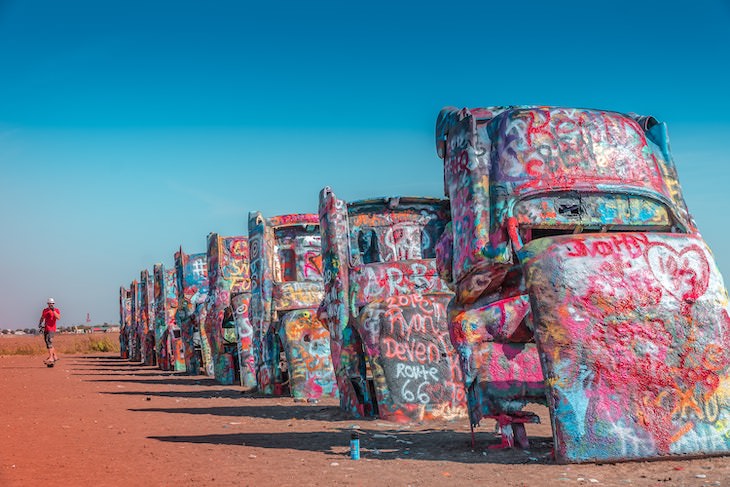
A short 15-minutes drive from the Texan city of Amarillo lies Cadillac Ranch, one of the most iconic and quirky sites on Route 66. The art installation was created in 1974 by Chip Lord, Hudson Marquez, and Doug Michels of the Ant Farm art collective in collaboration with the eccentric helium millionaire Stanley Marsh 3 (he didn’t like to use the Roman numeral III as he found it pretentious).
Cadillac Ranch consists of 10 Cadillacs half-buried nose-first in the ground. The cars are stacked neatly next to each other and covered in graffiti. Visitors are strongly encouraged, as is creating your own graffiti artwork on your chosen Cadillac.
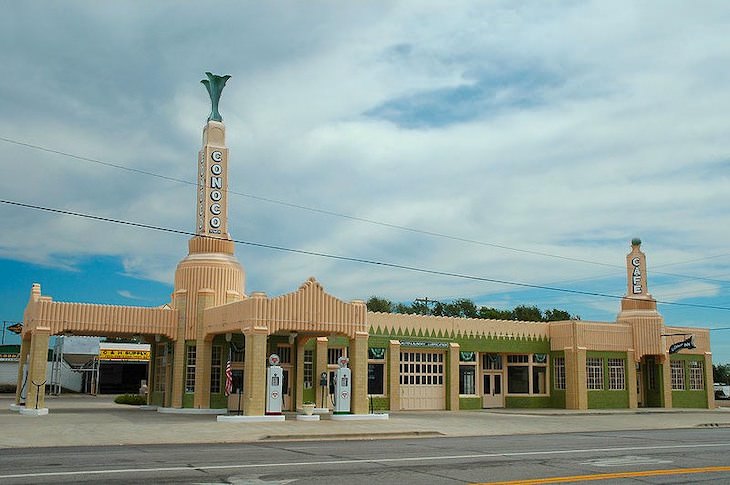
Image Source: Onasill Bill / Flickr
What’s a road trip without the traditional gas station restaurant stop? The Tower Station, U-Drop Inn, and Tower Café were built in 1936, and it is one of the most remarkable pieces of architecture remaining on the historic strip.
The Art Deco building features two flared towers with geometric details, glazed ceramic tile walls, and neon light accents. At one time the, U-Drop Inn was called “the swankiest of swank eating places.” But after the decommissioning of Route 66 in 1985, the establishment fell into despair and was closed in the late 1990s. In 2003, the U-Drop Inn got a second chance. Thanks to a federal grant, it was restored and now includes a visitor center and Shamrock’s Chamber of Commerce.
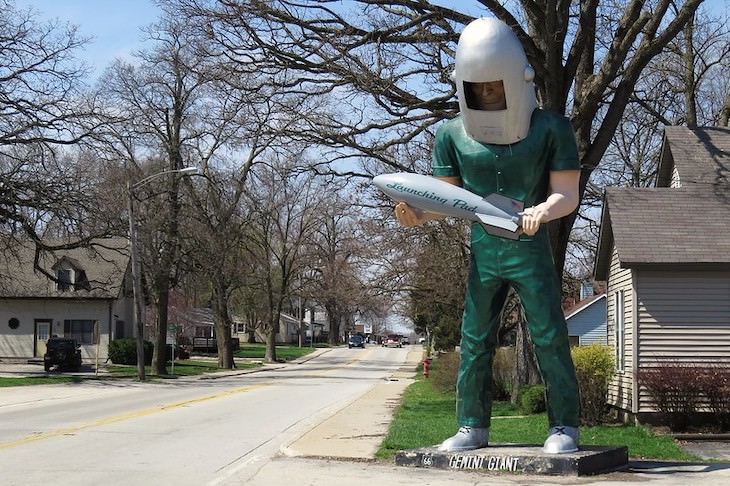
Image Source: Larry Myhre / Flickr
The 300-foot-tall Gemini Giant is one of many Muffler Men statues you’ll find along Route 66. These colossal fiberglass figures were a common American advertising concept used to promote roadside diners and souvenir shops in the 1960s.
The Gemini Giant was commissioned to stand outside of the Launching Pad Drive-In, a diner that has been serving Route 66 travelers since 1960. Its name and unique design were meant to honor the Gemini space program.
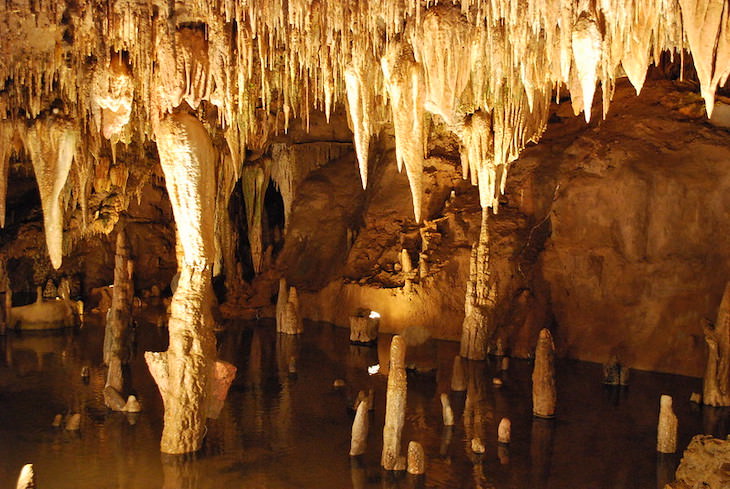
Image Source: Tydence Davis / Flickr
Meramec Caverns is a 4.6-mile long system of caves and a highlight landmark for those driving through Route 66. The 400-million-year-old system of caves began forming when water percolating through the bedrock of the Ozark hills began to dissolve the stone, which eventually created underground passages.
Meramec Caverns holds its place in history as a shelter for pre-Columbian Native Americans and a hideout for the notorious outlaw Jesse James.
Related: 10 Caves In the US You Have to Check Off Your List

Generally, this is the first or second stop after starting Route 66 in Chicago. St. Louis is a melting pot of cultures, history, music, and sport. One of the city’s highlights is definitely the iconic Gateway Arch. Founded in 1935 to commemorate Thomas Jefferson’s vision of a transcontinental United States, the Gateway Arch National Park stretches from the Old Courthouse to the steps overlooking the Mississippi River. Visitors can take a 630-foot ride to the top of the arch itself and enjoy the sensational view of the city from above.
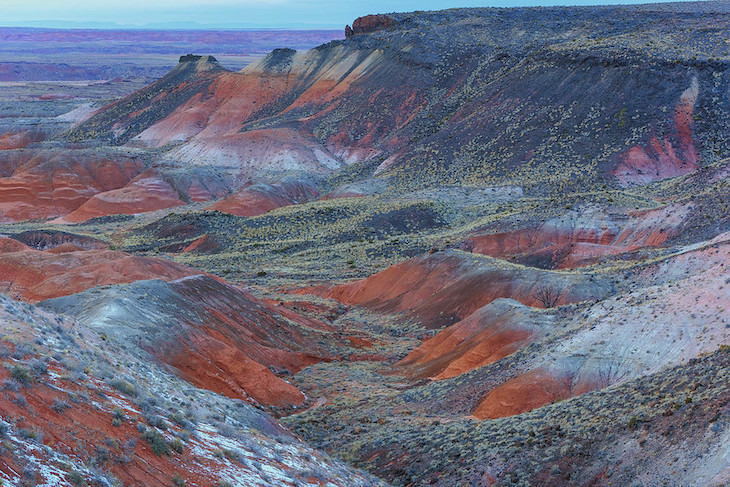
Image Source: Joe Jiang / Flickr
Stretched on the border between Navajo County and Apache County is Petrified Forest National Park. It is known for its fossils, especially those of fallen trees that grew during the Mesozoic Era more than 225 million years ago.
The northern part of this site extends into the Painted Desert, where you can see rocks in every hue - from sunset pinks and oranges to deep grays. Take a slight detour from Route 66 to catch the quintessential sight of the sun setting over the Painted Desert that turns the sky and the rocks into a canvas of fiery colors.
Related: 10 Road Trips in the USA With Breathtaking Views of Nature
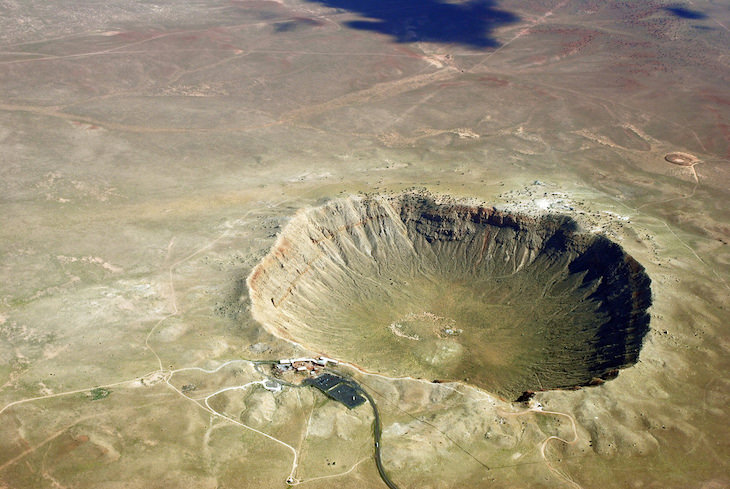
Image Source: Shane Torgerson / Wikimedia Commons
Seventy miles from Petrified Forest National Park and 20 miles west of Winslow you will find the world’s best-preserved meteorite impact site. About 50,000 years ago, a meteorite collided with Earth and left behind a crater that measures 0.75 miles (1.2 kilometers) across and more than 550 feet in depth. When visiting the crater, you can take a tour of the rim and see the interactive discovery center.

Image Source: Joseph / Flickr
For an unforgettable swim, stop at the Blue Hole desert oasis. Part of the Santa Rosa Sink, it is one of seven sister lakes connected underground. This bell-shaped pool is known for its exceptionally clear and pure water, and it is actually one of the most popular US destinations for scuba diving and training. Diving into the crystal clear water of the Blue Hole is exactly the refreshment one needs after spending long hours in the car.
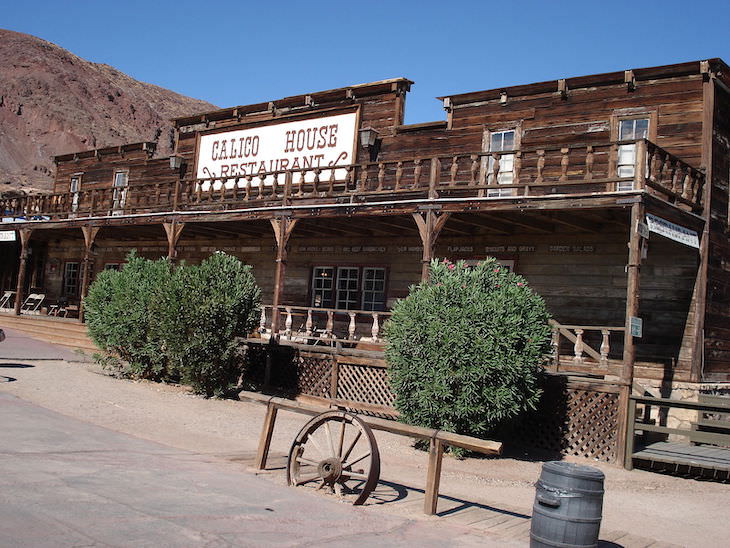
Image Source: Mistoffeles / Wikimedia Commons
Once filled with miners searching for silver, the town of Calico was abandoned in the 1880s after the price of silver plummeted. At its height, the town had 3,500 residents and over 500 silver mines, and it produced over $20 million in silver.
In the 1950s, after years of decay, the entire deserted town was bought by a man named Walter Knott. He restored Calico mostly how it was, rebuilding some of the old structures as they were back in the 1880s. The frozen-in-time ghost town allows you to get a glimpse into the past and experience the Old West as it once was.
Related: The History of These Abandoned Places Is Captivating
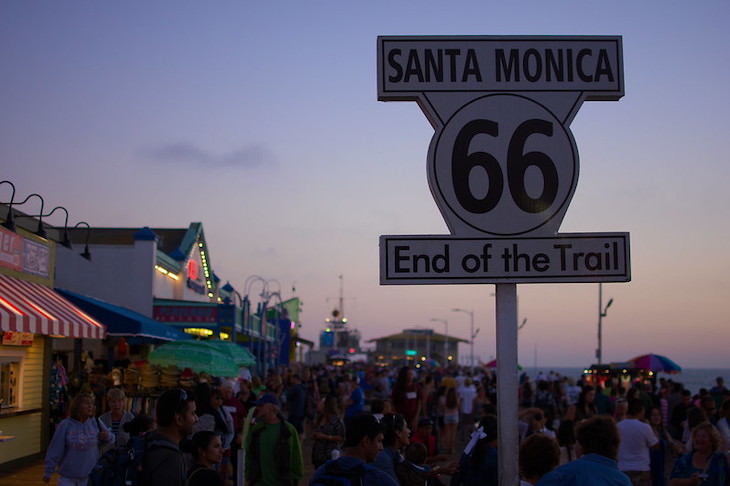
Image Source: Maelick / Flickr
The endpoint of the epic Route 66 is the Santa Monica Pier. While it officially had to end at a highway intersection, the travelers, many of whom came from far inland, kept going until they reached the Pacific. On the 83rd anniversary of the highway’s inception, the Route 66 Alliance and the Santa Monica Pier Restoration Corp put up the famous ‘Route 66 – End of the Trail’ sign to mark the long tradition of ending the journey at the Santa Monica Pier.
Share these tips with those who love traveling!